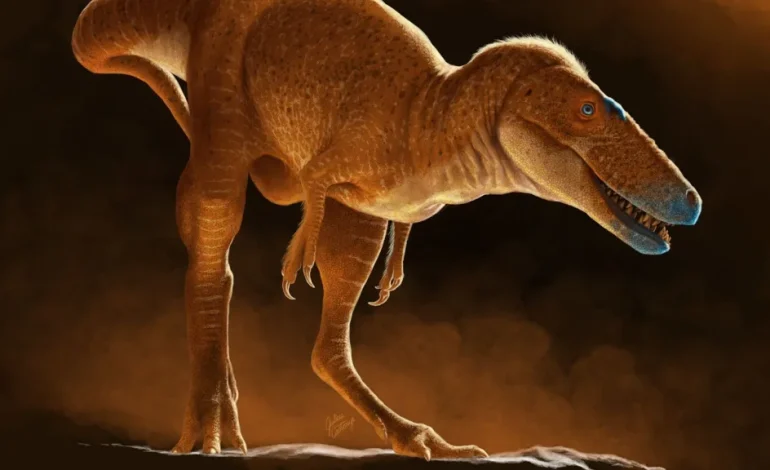Newly Identified Dinosaur Species Sheds Light on Tyrannosaur Evolution

A team of paleontologists has identified a new species of dinosaur that may rewrite the evolutionary story of some of the most formidable predators to ever walk the Earth—including Tyrannosaurus rex.
The species, Khankhuuluu mongoliensis, was discovered not through a new excavation but by reexamining fossils collected in Mongolia over 50 years ago.
The partial skeletons, originally unearthed in the Gobi Desert in the 1970s, were first classified as belonging to an already known species. But in 2023, Jared Voris, a Ph.D. student at the University of Calgary, came across the bones in a museum display and noticed they had several distinct features. These included a hollow nasal bone—unusual for large carnivorous dinosaurs, which typically had solid skulls—and unique configurations in the toes and legs.
This prompted a deeper analysis, led by Voris and his advisor, Professor Darla Zelenitsky. Their research, published in Nature, concludes that the bones belong to a previously unrecognized member of the tyrannosaur family. The newly named Khankhuuluu mongoliensis, which translates to “Dragon Prince of Mongolia,” is believed to have lived around 86 million years ago, predating T. rex by approximately 20 million years.
Unlike its massive relatives, Khankhuuluu was relatively small, weighing about 750 kilograms (1,650 pounds) and measuring roughly 13 feet in length. Despite its size, the species had anatomical traits that suggest it was a transitional form—a crucial evolutionary link between early, nimble tyrannosaurs and the massive apex predators that came later.
“This discovery has helped us revise the tyrannosaur family tree,” Zelenitsky said. “It highlights how early members of this group evolved critical features, like strong bite force, long before reaching the size of T. rex.”
The study also suggests that multiple migrations between Asia and North America via land bridges played a pivotal role in the evolution and diversification of tyrannosaurs. Khankhuuluu, or its ancestors, likely migrated across such a bridge, leading to new evolutionary branches in both continents.
Paleontologists have long sought fossils from this particular time period to better understand how tyrannosaurs transformed from small predators into the dominant giants of the late Cretaceous period. The discovery of Khankhuuluu fills a significant gap in that timeline.
The findings also clarify the placement of previously mysterious tyrannosaur species such as Alioramus, a smaller, long-snouted dinosaur sometimes nicknamed “Pinocchio rex.” Once thought to be primitive, these species are now considered specialized offshoots that evolved miniaturization within a family tree dominated by giants.
Experts not involved in the study praised the work, noting the importance of revisiting long-stored fossils.
“This discovery shows how critical it is to reexamine museum collections,” said Dr. Steve Brusatte, a paleontologist at the University of Edinburgh. “Specimens like these can reveal entirely new chapters in the history of life.”









The latest news in your social feeds
Subscribe to our social media platforms to stay tuned